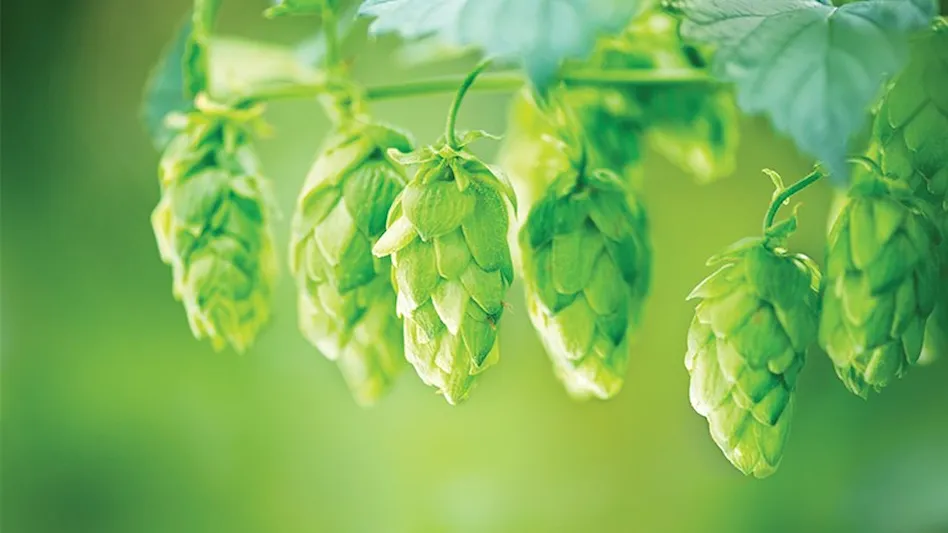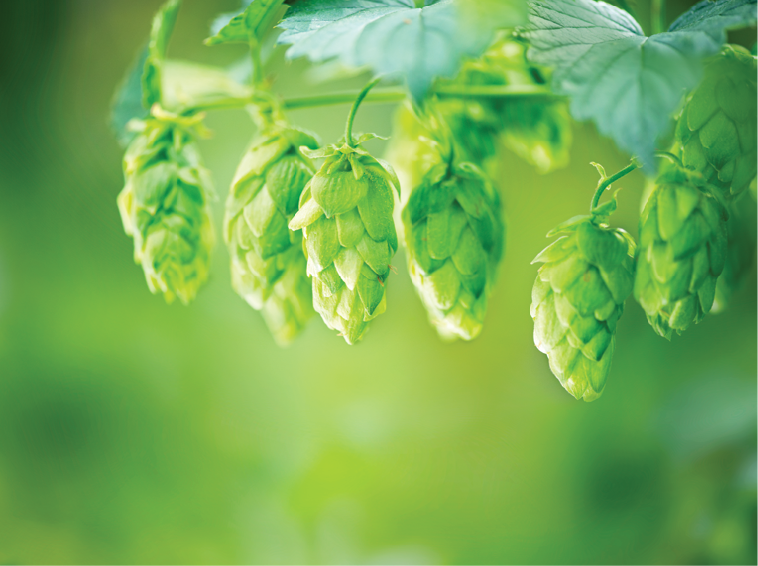

Expanding into new crop markets can be both exciting and risky. For greenhouse operations willing to grow outside their comfort zone, specialty crops such as hops can open doors to entirely new markets for revenue. The popularity of craft beer has risen exponentially in the last few years and it seems like everyone and their brother wants to open a local brewery. Problem is, you can’t brew and sell authentic local craft beer if you can’t source authentically local ingredients. Hops are notoriously not locally grown through much of the U.S.
You may have noticed an uptick in new niche growers (often without any farming or greenhouse growing experience) trying to get into the hops game and fill the local market void. That means now’s the time for established growers to weigh the pros and cons of growing hops and capture the market share, if the pros are in their favor.
Why hops?
When brewing beer, the hop cones (female flower structures) are used to naturally preserve the beer. But hops also add a distinctly bitter flavor and aroma. As is always the case in the culinary market, certain flavor profiles ebb and flow in popularity. Some people love “hoppy” beer; some people hate it. If you tend to prefer a more bitter flavor profile, then you may love hoppy beer. In any case, it’s a flavor that happens to be on trend right now.
While the price value of hops has been a bit bumpy over the last 10 years — and there’s no guarantee hoppy beer will be in big demand 10 years from now — interest in expanding the supply chain is growing. Beyond beer, there’s also a growing market for hops in pharmaceutical trade.
Where hops grow
Hops are most likely native to China but have migrated commercially into many other temperate growing regions. Historically, the first hops in the U.S. were grown in the 1700s along the East Coast. These days, most of the commercially grown hops crops are grown in the Pacific Northwest. Environmentally speaking, there are several key factors that have thus far limited hops production to such climates. There are many hoops to hop through to grow happy hops. (Sorry, I couldn’t help myself!)
How hops grow
To thrive, hops require sandy loam soils that are deep and well-draining, with a perfect pH of 6.5. They are perennial plants with deep root systems. Hop plants also go through a dormancy period and need winter temperatures below 40°F for 30 to 60 days. You also need a solid 120 days of frost-free weather for a successful harvest.
Plant support infrastructure is also crucial and doesn’t come cheap. Hops are large bines (not vines) that quickly grow to a height of about 25 feet, meaning they’ll require sturdy support structures, often installed at an angle for best production. Lots of sunlight volume is needed to support such intensive growth.
If you’re a greenhouse grower using controlled environments to produce crops such as cannabis or tomatoes, you might already have the right setup to expand into hops.
To make matters even more complicated, hops is photoperiodic, a short-day plant, much like its cannabis cousin. That means the female plants (hops is dioecious) won’t be stimulated to produce flower buds until the critical photoperiod is reached. While critical photoperiods vary slightly between genotypes, in general, hops can be naturally induced to flower outdoors between the 35th and 55th latitudes with varying yields. Note that any NI (night interruption) lighting that breaks up the required length of dark period during flower initiation can delay flowering. That means street lights, flood lights and even moonlight.
The vegetative growing phase for hops is generally spring through early summer (northern hemisphere). Then flowering is initiated as day lengths begin to shorten (night duration lengthens) after the summer equinox, followed by a late summer harvest and plant dieback and dormancy in fall and winter. During the summer flowering phase, the closer you are to the minimum critical photoperiod, you’ll get shorter plants, lower yields and a later harvest date. That’s why your latitude matters. To top it all off, the plants must reach a specific node count before flower initiation is successful. WHEW.
It’s a complex crop and that’s without even getting into any of the cultural and fertility strategies — or rainfall and humidity — that influence plant health and the acid content of each hops variety.
Worth the reach?
Ok, so it’s clear why we don’t have a thriving hops-growing market here in Texas — we do not check ANY of those boxes. It should also now be obvious to you why Germany and the Pacific Northwest are a natural fit for field-grown hops. That said, if you’re a greenhouse grower using controlled environments to produce crops such as cannabis or tomatoes, you might already have the right setup to expand into hops.
If you’re in a latitude where photoperiod isn’t suitable, be prepared to use artificial lighting regimens that include blackout capabilities. If you’re in a region where temperatures don’t get cool enough, you could move dormant containerized plants or rhizomes to chilling facilities to facilitate adequate dormancy.
As a greenhouse grower using a hydroponic setup, you do have these potential flexibilities not available to a field grower. Niche specialty crops can certainly help add depth and value to your product line. A crop such as hops could also help open doors to an entirely new customer base. As with any new opportunity, first analyze your local market for supply gaps and demand before investing in the infrastructure required for happy hops.

Explore the June 2019 Issue
Check out more from this issue and find you next story to read.
Latest from Greenhouse Management
- CIOPORA appoints Micaela Filippo as vice secretary-general
- Passion grows progress
- Registration opens for Darwin Perennials Day
- U.S. Department of Labor finalizes farmworker protection rule
- Azo Root is now available from Harrell’s
- Bidens ferulifolia Blazing Glory
- Rob Hanifin joins Ridder North America as product specialist for climate screens
- The importance of measuring light





